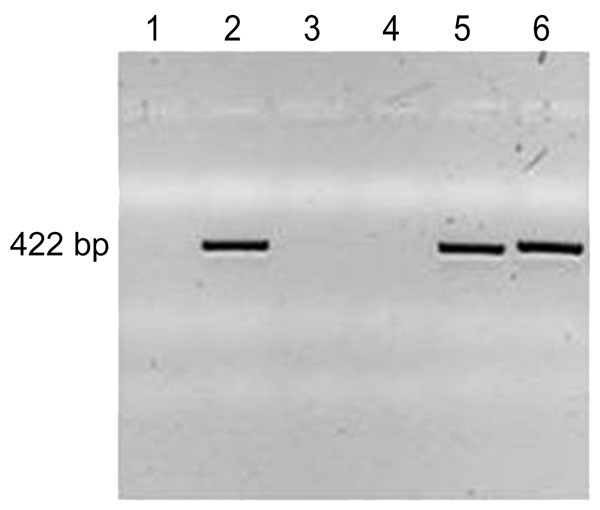Volume 17, Number 10—October 2011
Letter
Granulicatella adiacens and Early-Onset Sepsis in Neonate
Figure

Figure. PCR amplification of Granulicatella adiacens DNA. DNA was prepared from the bacteria indicated, PCR-amplified with G. adiacens–specific primers, and subjected to agarose gel electrophoresis with ethidium bromide staining and ultraviolet light visualization. Lane 1, water, negative control; lane 2, G. adiacens–positive control, ATCC 49175; lane 3, DH5α Escherichia coli–negative control (Invitrogen, Carlsbad, CA, USA) 18263–012; lane 4, Enterobacter sakazakii–negative control, ATCC BAA-894 (American Type Culture Collection, Manassas, VA, USA); lane 5, patient’s blood culture isolate; lane 6, DNA isolated from a pool of bacteria obtained from the cervix of the patient’s mother. DNA amplicons were amplified only from the positive control, the patient’s blood culture, and his mother’s cervical swab specimen. Sequence analysis confirmed all 3 amplicons as G. adiacens.